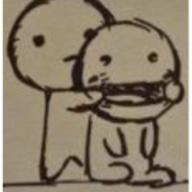✔ 最佳答案
0.
no, it's probably not octet rule.
it should be 18-electron rule.
for complexes, especially the transition metals, electron count is usually 18;
there're ones with 17, 16, 19 and 20, but they're unstable.
16 / 17 electrons: strongly oxidizing, tends to gain electrons;
19 / 20 electrons: strongly reducing, tends to donate electrons.
electrons from both the central atom and the ligands are taken into consideration of the electron count.
1.
Co[Co(OH)2(NH3)4]3
wait, you sure it has 2 hydroxo- and 4 ammine- ??
the charge doesn't make sense, as this anion should be negative (placed at the end of the formula).
common O.N. of Co is +2 or +3, while O.N. of THIS Co seems to be +1.
are you sure the formula is correct, or this compound is one that's not commonly seen, or it's just something you invent?
anyway, to illustrate the solution, i'll just assume it to be Co[Co(OH)4(NH3)2]3 .
there're 2 ways to solve this.
- solely look at the anion. it should be a stable anion, which has 18 electrons is its outermost shell.
4 hydroxo- ligands give 8 electrons,
2 ammine- ligands give 4 electrons,
then, cobalt itself should have 18-8-4 = 6 electrons coming from itself.
neutral elemental cobalt atom has 9 electrons in outermost shell; now it has 6,
so, cobalt in the anion has oxidation number of +3.
- by looking at the coefficient of anion in compound (electrically neutral), charge of anion should be 1- , as cobalt cation can has O.N. of +2 or +3.
when cation has charge of +2, then charge of each anion will be +2/3 , which is not likely (unless it's some weird mixed-valency compound).
thus, charge of cation is likely to be +3, and anion is -1.
four 1- hydroxide ion, two neutral ammonia, resulting charge of 1-,
the Co inside must be 3+ is charge. O.N. is +3.
2011-06-23 21:45:40 補充:
2.
you should at least have the charge of the ion; otherwise, there's almost nothing you can do.
Uranium is even more problematic --
cobalt is in d-block, 4th period, so atomic size is relatively small. prediction of its behavior is easier;
2011-06-23 21:45:49 補充:
U is in f-block, actinide group, 6th period. atomic size is large with complication of f-orbitals. difficult!
uranyl has charge of 2+ ; the oxo- ligand can be treated as oxide ion, forming double bond as U=O.
2011-06-23 21:45:57 補充:
each O draws two pair of electrons from uranium, while uranyl still possesses charge of +2. thus imaginary charge (ie. O.N) of uranium is +6.
2011-06-23 21:48:25 補充:
- or in this way: uranyl contains 2 oxide ion, each has charge of 2- ; total charge is 4- ;
now it has charge of 2+, so the uranium inside should has imaginary charge (O.N.) of +6, such that
(6+) + 2x(-2) = 2+
2011-06-30 15:35:10 補充:
after searching, i found "hexol" on wikipedia which matches your ion.
next time, you could use the brackets more precisely:
Co((OH)2Co(NH3)4)3 ----> {Co[(OH)2Co(NH3)4]3} (charge)
the ion has OH as bridging ligand, charge of 6+ , and is polynuclear.
2011-06-30 15:43:26 補充:
arguably, charge of ion = 6+ , charge of 6 hydroxo-ligand is 6-,
so 4 Co atoms should bear total charge of 12+ ; O.N. of each one is +3.
but this is a very complicated case, as bridging ligand probably bears some +ve charge.
2011-06-30 15:45:19 補充:
man, when one needs to come across these complications, he should had known more than O.N., like energy level diagram or ligand-field theory.

